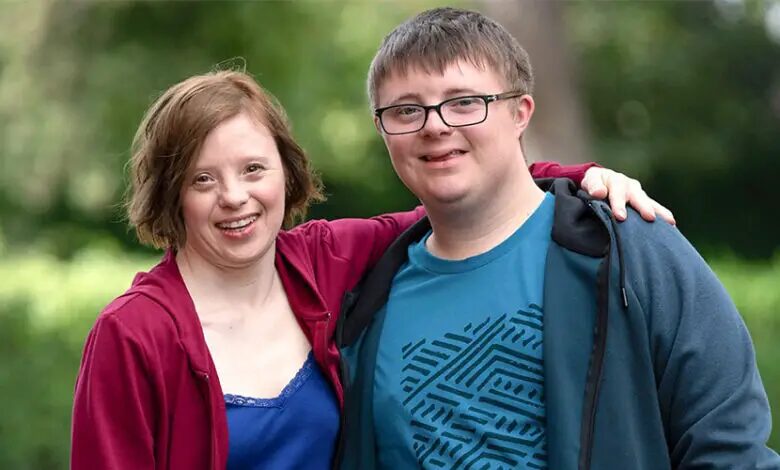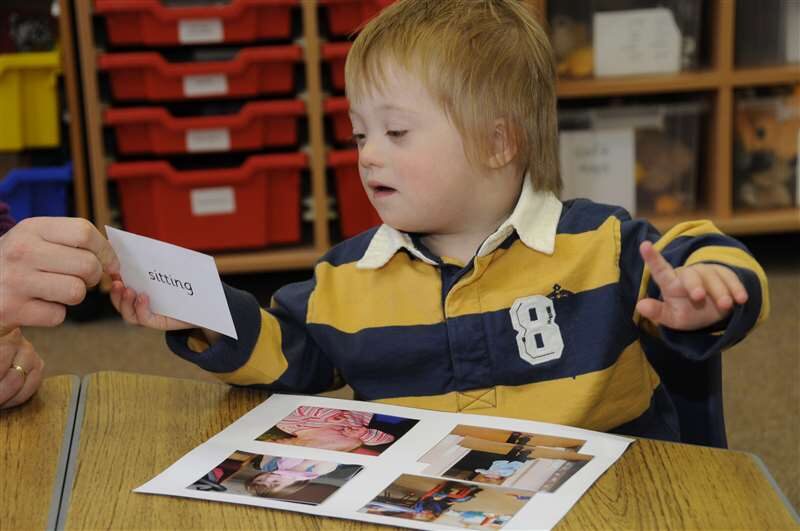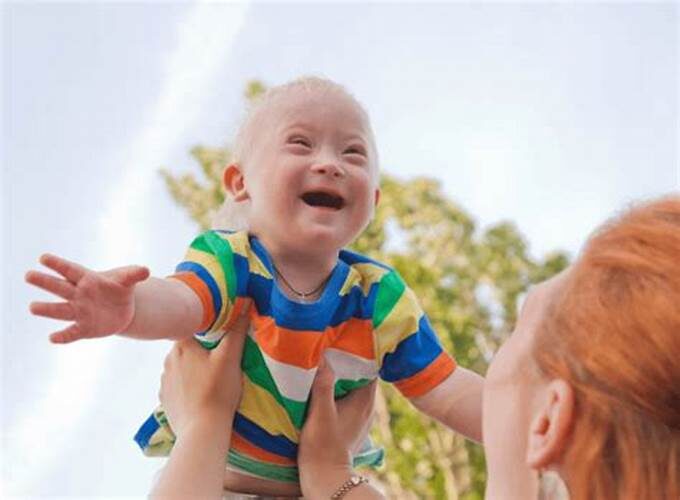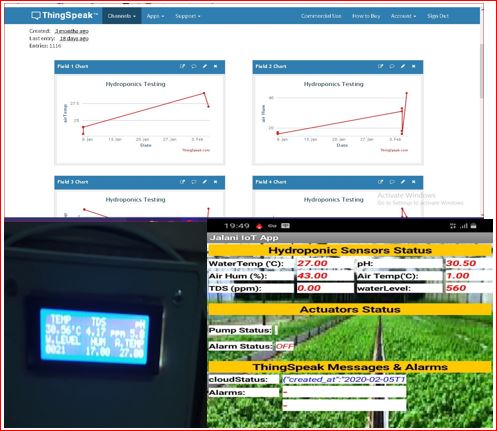
A Guide for Down Syndrome: Imagine a world where every day brings new challenges and triumphs, where every milestone, big or small, is a cause for celebration. This is the reality for children with Down syndrome, a genetic condition that affects chromosome development. If you’ve recently received a Down syndrome diagnosis for your child, you’re likely feeling a whirlwind of emotions – confusion, fear, maybe even a touch of overwhelm. But fear not, because knowledge is power. This article equips you with everything you need to know about Down syndrome, from understanding the condition to navigating resources and fostering your child’s unique potential.
Understanding Down Syndrome
Down syndrome (DS) occurs when a person has an extra copy of chromosome 21. Typically, each cell in our body contains 23 pairs of chromosomes, but in Down syndrome, there’s an extra chromosome in the 21st pair. This extra genetic material alters how the body and brain develop, leading to a range of physical and intellectual characteristics.
Types of Down Syndrome
There are three main types of Down syndrome:
- Trisomy 21: This is the most common form, accounting for about 95% of cases. It occurs when there’s a full extra copy of chromosome 21 in every cell.
- Translocation Down syndrome: In this less common type (around 4% of cases), the extra genetic material from chromosome 21 is attached to another chromosome.
- Mosaic Down syndrome: This rare form (about 1% of cases) results from having some cells with an extra chromosome 21 and some cells with the normal number of chromosomes. The severity of symptoms can vary depending on the proportion of cells with the extra chromosome.
Characteristics of Down Syndrome

Children with Down syndrome may share some common physical features, such as:
- A flat facial profile with a small nose and upward-slanting eyes
- A small mouth and tongue that often protrudes slightly
- Small ears
- Short stature with shorter limbs
- A single crease across the palm of the hand
Developmental Delays
Children with Down syndrome typically experience some degree of developmental delay, meaning they may reach milestones like walking, talking, and self-care skills later than other children.
Intellectual Disabilities
Most children with Down syndrome have mild to moderate intellectual disabilities. This can affect their learning and problem-solving skills. However, with proper support and intervention, they can learn and thrive.
Medical Conditions
Children with Down syndrome are more prone to certain medical conditions, such as heart defects, hearing and vision problems, thyroid issues, and respiratory infections. Early diagnosis and treatment are crucial to managing these conditions.
The Importance of Early Intervention
Early intervention is key to maximizing a child’s potential. Programs that focus on speech therapy, physical therapy, occupational therapy, and educational support can significantly enhance a child’s development and independence.
Supporting Your Child with Down Syndrome

Raising a child with Down syndrome comes with unique challenges and immense rewards. Here are some tips to navigate this journey:
- Educate Yourself: Knowledge is power. Research Down syndrome and connect with support groups and organizations.
- Embrace Early Intervention: Seek out early intervention programs that can help your child reach their full potential.
- Celebrate Milestones, Big and Small: Every achievement, no matter how seemingly insignificant, is a cause for celebration.
- Advocate for Your Child: Be your child’s voice and advocate for their needs in educational and medical settings.
- Focus on Abilities, Not Disabilities: Don’t let Down syndrome define your child. Instead, focus on their strengths and opportunities for growth.
- Connect with Other Parents: Surround yourself with a community of parents who understand the joys and challenges you face.
Building a Positive and Inclusive Environment
Create a warm, loving, and stimulating environment for your child. Foster a sense of belonging by encouraging social interactions with typically developing peers. Remember, inclusion is key to fostering self-esteem and promoting your child’s development.
Living a Fulfilling Life with Down Syndrome

With proper support and opportunities, individuals with Down syndrome can lead happy and fulfilling lives. Many attend college, find meaningful employment, and contribute positively to their communities.
Resources for Families
The road ahead may seem daunting at times, but there’s a wealth of resources available to support you and your child. Here are some key starting points:
- National Down Syndrome Society (NDSS): This leading advocacy organization provides extensive information, resources, and support programs for families with Down syndrome. (Insert Link to NDSS website)
- Down Syndrome Association of America (DSA): Another valuable resource offering information, support groups, and educational resources. (Insert Link to DSA website)
- Your Pediatrician: Your child’s pediatrician can be a vital source of information, referrals to specialists, and guidance on managing any associated medical conditions.
- Early Intervention Programs: Contact your local authorities or school district to learn about early intervention programs available in your area.
- Online Support Groups: Connecting with other parents through online forums or local chapters of Down syndrome organizations can offer invaluable support and a sense of community.
The Future of Down Syndrome Research

Research on Down syndrome is constantly evolving, leading to breakthroughs in early diagnosis, treatment options, and potential therapies. Initiatives like gene therapy and prenatal screening hold promise for the future. Here are some LSI keywords related to Down syndrome research:
- Prenatal diagnosis of Down syndrome
- Non-invasive prenatal testing (NIPT)
- Gene therapy for Down syndrome
- Clinical trials for Down syndrome
Conclusion
Guide for Down Syndrome may present a difficult path, but it’s a journey filled with love, laughter, and limitless possibilities. Remember, your child is an individual with unique strengths and abilities. By embracing their individuality, providing early intervention, and fostering a supportive environment, you can empower your child to reach their full potential and lead a happy and fulfilling life.
You May Also Like….
- Foods to Fight Acid Reflux and Heartburn
- Exploring the Weird and Wonderful Things That Happen After Death
- Clear Your Mind: A Beginner’s Guide to Meditation
Frequently Asked Questions
Q1: What causes Down syndrome?
Down syndrome is not caused by anything you did during pregnancy. It’s a random genetic event that occurs during cell division.
Q2: Can people with Down syndrome live a normal life?
The definition of “normal” is subjective. With proper support and opportunities, individuals with Down syndrome can attend school, find work, and live fulfilling lives.
Q3: Is Down syndrome curable?
Currently, there’s no cure for Down syndrome. However, research is ongoing to explore potential therapies and interventions.
Q4: How can I help raise awareness about Down syndrome?
Talk openly about Down syndrome, educate others, and support organizations dedicated to research and advocacy.
Q5: What are some positive aspects of raising a child with Down syndrome?
Raising a child with Down syndrome can be an enriching experience. These children often demonstrate remarkable resilience, joy, and an unconditional love for life.

